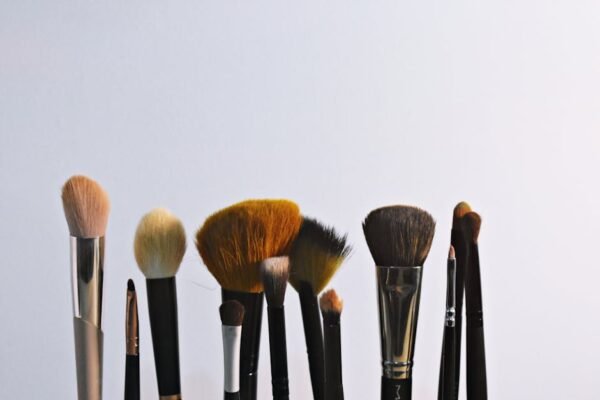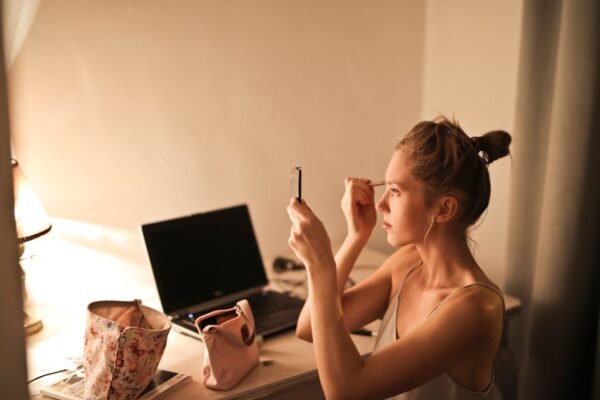Introduction to LED Light Therapy for Acne
{“type”:”img1″,”src”:”https://facehubs.com/wp-content/uploads/2024/03/fileUpload-60.jpg”,”alt”:”LED light therapy device”}Acne is a common skin condition that affects millions worldwide, prompting individuals to seek innovative and effective treatment options. Among these, LED light therapy has emerged as a promising solution for at-home care. This method employs light-emitting diodes (LED) emitting wavelengths that purportedly target and mitigate acne-causing bacteria and inflammation. Understanding how it works, its effectiveness, and safety is crucial for those considering this treatment.
LED light therapy for acne utilizes specific light colors, primarily red and blue, each serving different purposes. Blue light is known for its antibacterial properties, targeting the bacteria that cause acne. Red light, on the other hand, promotes healing and reduces inflammation, making it beneficial for acne scars. Together, these lights offer a comprehensive approach to treating acne.
Despite its growing popularity, misconceptions and uncertainties about LED light therapy abound. This blog post aims to demystify this innovative treatment, presenting research-backed information and user experiences. It's important to note that while promising, LED light therapy is not a one-size-fits-all solution. Each individual's skin is unique, requiring personalized care and consideration.
Before integrating LED light therapy into your skincare routine, it's essential to understand its nuances. This includes recognizing that it's a supplementary treatment rather than a standalone cure. For best results, LED therapy should be part of a broader skincare regimen that includes proper cleansing, moisturization, and sunscreen application.
Now, let's delve deeper into what LED light therapy entails, its benefits, potential downsides, and how to safely incorporate it into your acne treatment plan.
Scientific Basis of LED Light Therapy
At its core, LED light therapy for acne is grounded in photobiomodulation, a process by which light influences cellular behavior. Various studies have highlighted its effectiveness in reducing acne lesions, especially when used consistently over time. Specifically, blue light targets and destroys P. acnes bacteria, a primary acne contributor, without damaging the skin.
It's also worth mentioning that the therapeutic effects of red and blue light extend beyond their antibacterial capabilities. These wavelengths have been shown to reduce inflammation and promote healing, key aspects in managing acne and preventing scars. However, the strength of these effects can vary based on the device's quality and the duration of use.
The appeal of LED light therapy lies in its non-invasive nature and the absence of significant side effects. Unlike other acne treatments that may cause dryness, irritation, or peeling, LED therapy is gentle on the skin. This makes it a suitable option for individuals with sensitive skin or those seeking a less aggressive treatment alternative.
However, the scientific community continues to study LED light therapy's long-term effects and efficacy. While the current evidence is promising, more research is needed to fully understand its therapeutic potential and optimal usage guidelines.
In the next section, we will explore the practical aspects of using LED light therapy at home, including device selection and treatment protocols.
Choosing the Right LED Light Therapy Device
{“type”:”img1″,”src”:”https://facehubs.com/wp-content/uploads/2024/03/fileUpload-62.jpg”,”alt”:”person using an LED light therapy mask at home”}With the increasing availability of at-home LED light therapy devices, selecting the right one can seem daunting. Key factors to consider include the device's light wavelength, intensity, and coverage area. Devices offering both red and blue light options are preferable, as they provide a more comprehensive treatment.
Another important consideration is the device's FDA clearance. While not all effective devices are FDA-cleared, approval indicates that the device has been tested for safety. Reading reviews and seeking recommendations from dermatologists can also guide your decision-making process.
Price is another factor to consider, as it can vary significantly between devices. However, it's essential to prioritize quality and safety over cost. A higher price tag does not always equate to efficacy, but investing in a reputable, well-reviewed device is advisable.
Furthermore, ease of use and comfort are crucial for ensuring consistent use. Devices that are cumbersome or uncomfortable are less likely to be used regularly, diminishing their potential benefits. Ergonomic designs and user-friendly interfaces can enhance the treatment experience.
Lastly, it's vital to set realistic expectations regarding the outcomes. While LED light therapy can produce noticeable improvements, it is not a miracle cure. Consistency, patience, and adherence to the recommended usage guidelines are key to achieving desired results.
How to Use LED Light Therapy at Home
Using an LED light therapy device at home involves more than just turning it on and exposing your skin to the light. Proper preparation and post-treatment care are essential for maximizing its benefits and minimizing potential risks. Start by thoroughly cleansing your face to remove any makeup, oil, or dirt that could block the light's penetration.
It's recommended to use the device on dry, clean skin, following the manufacturer's instructions regarding duration and frequency. Typically, treatments last between 10 to 20 minutes and can be done multiple times a week. However, it's crucial to gradually introduce the device to your skin, beginning with shorter sessions and fewer days to monitor how your skin reacts.
After each session, applying a gentle moisturizer can help soothe the skin and maintain hydration. However, avoid using products with potentially irritating ingredients immediately before or after treatment. The same goes for sun exposure; protecting your skin with a broad-spectrum sunscreen is essential, as LED therapy can make it more sensitive to sunlight.
Monitoring your skin's response is vital to gauging the effectiveness and safety of the treatment. While mild redness immediately after use is normal, persistent irritation or worsening of acne may indicate the need to adjust the treatment or consult a dermatologist.
Consistency is crucial for seeing results from LED light therapy. While improvements can be observed within a few weeks, achieving optimal outcomes often requires months of regular use. Patience and persistence are essential in this journey towards clearer skin.
Addressing Common Concerns and Questions
Many individuals have reservations and questions about at-home LED light therapy. One of the most frequent concerns is its safety. Rest assured, when used according to the manufacturer's guidelines, LED light therapy is considered safe for most people. However, individuals with certain skin conditions or those taking light-sensitive medications should consult a dermatologist before use.
Another common question revolves around the visibility of results. As mentioned, while some may notice improvements within a few weeks, significant changes often take longer. Comparing before-and-after photos can be a helpful way to track progress.
There's also curiosity about combining LED light therapy with other acne treatments. Generally, LED therapy can be safely paired with most topical treatments, although it's advisable to allow time between using topical products and the light therapy session. Discussing your entire skincare regimen with a dermatologist can ensure that treatments complement rather than hinder each other.
Finally, the longevity of results and the necessity of ongoing treatments are areas of interest. Like many skincare treatments, the benefits of LED light therapy may diminish over time without consistent use. Incorporating it as a regular part of your skincare routine can help maintain its positive effects.
In conclusion, LED light therapy offers a novel approach to acne treatment that, when used correctly and consistently, can yield significant benefits. By understanding its scientific basis, selecting the right device, and adhering to best practices for use, individuals can harness the power of light to combat acne and improve their skin's overall appearance.





